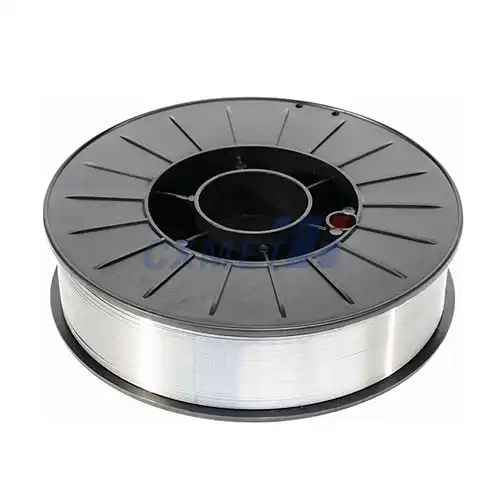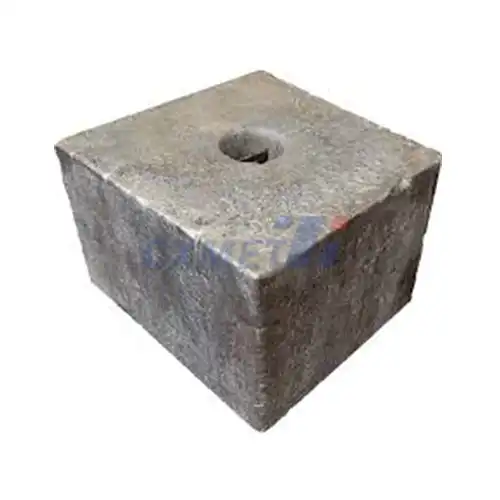- English
- French
- German
- Portuguese
- Spanish
- Russian
- Japanese
- Korean
- Arabic
- Greek
- German
- Turkish
- Italian
- Danish
- Romanian
- Indonesian
- Czech
- Afrikaans
- Swedish
- Polish
- Basque
- Catalan
- Esperanto
- Hindi
- Lao
- Albanian
- Amharic
- Armenian
- Azerbaijani
- Belarusian
- Bengali
- Bosnian
- Bulgarian
- Cebuano
- Chichewa
- Corsican
- Croatian
- Dutch
- Estonian
- Filipino
- Finnish
- Frisian
- Galician
- Georgian
- Gujarati
- Haitian
- Hausa
- Hawaiian
- Hebrew
- Hmong
- Hungarian
- Icelandic
- Igbo
- Javanese
- Kannada
- Kazakh
- Khmer
- Kurdish
- Kyrgyz
- Latin
- Latvian
- Lithuanian
- Luxembou..
- Macedonian
- Malagasy
- Malay
- Malayalam
- Maltese
- Maori
- Marathi
- Mongolian
- Burmese
- Nepali
- Norwegian
- Pashto
- Persian
- Punjabi
- Serbian
- Sesotho
- Sinhala
- Slovak
- Slovenian
- Somali
- Samoan
- Scots Gaelic
- Shona
- Sindhi
- Sundanese
- Swahili
- Tajik
- Tamil
- Telugu
- Thai
- Ukrainian
- Urdu
- Uzbek
- Vietnamese
- Welsh
- Xhosa
- Yiddish
- Yoruba
- Zulu
What are the Corrosion Resistance Capabilities of Tantalum Discs?
Tantalum discs are renowned for their exceptional corrosion resistance capabilities, making them invaluable in various industries where exposure to harsh chemicals and extreme environments is a concern. This remarkable property stems from tantalum's ability to form a stable, self-healing oxide layer when exposed to air or other oxidizing environments. This protective layer acts as a barrier, preventing further corrosion and degradation of the underlying metal. As a result, tantalum discs can withstand a wide range of corrosive substances, including strong acids, alkalis, and chlorine compounds, making them ideal for applications in chemical processing, pharmaceuticals, and electronics manufacturing.
How do tantalum discs compare to other corrosion-resistant materials?
When it comes to corrosion resistance, tantalum discs often outperform many other materials commonly used in industrial applications. Compared to stainless steel, for instance, tantalum exhibits superior resistance to a broader range of corrosive media. While stainless steel is susceptible to pitting and crevice corrosion in chloride-containing environments, tantalum remains virtually unaffected. This makes tantalum discs particularly valuable in seawater applications or in processes involving chlorine-based chemicals.
Another material often used for its corrosion resistance is titanium. However, tantalum surpasses titanium in its ability to withstand hot, concentrated acids. For example, tantalum can resist boiling sulfuric acid at concentrations up to 98%, whereas titanium begins to degrade at much lower concentrations. This superior acid resistance makes tantalum discs the material of choice in applications involving aggressive chemical environments, such as in the production of pharmaceuticals or specialty chemicals.
Nickel alloys, such as Hastelloy and Inconel, are also known for their corrosion resistance. However, tantalum outperforms these alloys in many acidic environments, particularly in the presence of reducing acids like hydrochloric acid. Tantalum's resistance to hydrochloric acid is so remarkable that it's often used to handle this acid at all concentrations and temperatures, up to the acid's boiling point.
The exceptional corrosion resistance of tantalum discs comes at a higher initial cost compared to some other materials. However, the long-term benefits often outweigh this initial investment. The extended lifespan of tantalum components, reduced maintenance requirements, and decreased risk of contamination in sensitive processes can result in significant cost savings over time. Additionally, the unique properties of tantalum often allow for thinner-walled components, which can partially offset the material cost in some applications.
What are the main applications of tantalum discs in corrosive environments?
Tantalum discs find extensive use in a variety of industries where corrosion resistance is paramount. In the chemical processing industry, these discs are often employed in heat exchangers, reactors, and distillation columns. Their ability to withstand a wide range of corrosive chemicals, including hot acids and chlorine compounds, makes them ideal for handling aggressive process streams without degradation or contamination.
In the pharmaceutical industry, tantalum discs play a crucial role in maintaining the purity of drug compounds during production. They are used in reactors, stirrers, and other processing equipment where even trace amounts of contamination from corroded materials could compromise the quality and safety of the final product. The inertness of tantalum ensures that it doesn't react with or leach into the pharmaceutical compounds, preserving their integrity throughout the manufacturing process.
The electronics industry also benefits from the corrosion resistance of tantalum discs. In the production of semiconductors and other electronic components, ultra-high purity environments are essential. Tantalum's resistance to corrosion by the various chemicals used in etching, cleaning, and deposition processes makes it an excellent material for wafer carriers, gas distribution systems, and other critical components in semiconductor fabrication equipment.
In the field of energy production, particularly in nuclear power plants, tantalum discs are used in various components exposed to corrosive environments. Their resistance to high-temperature steam and their low neutron absorption cross-section make them suitable for use in certain reactor components and reprocessing equipment.
The aerospace industry also utilizes tantalum discs in applications where corrosion resistance is critical. For instance, they are used in components of rocket engines that come into contact with highly corrosive propellants. The ability of tantalum to withstand these aggressive chemicals while maintaining structural integrity is crucial for the safety and reliability of aerospace systems.
How does the microstructure of tantalum discs affect their corrosion resistance?
The microstructure of tantalum discs plays a significant role in determining their corrosion resistance properties. The corrosion resistance of tantalum is primarily attributed to the formation of a stable, protective oxide layer on its surface. However, the effectiveness of this oxide layer and the overall corrosion resistance can be influenced by various microstructural factors.
One important aspect is the grain size and distribution within the tantalum disc. Generally, a fine-grained structure is preferred for optimal corrosion resistance. Finer grains provide more grain boundaries, which can act as barriers to corrosion propagation. Additionally, a uniform grain structure ensures a more even distribution of the protective oxide layer, reducing the likelihood of localized corrosion attacks.
The purity of the tantalum used in the discs also significantly affects their corrosion resistance. High-purity tantalum, with minimal interstitial impurities such as oxygen, nitrogen, and carbon, exhibits superior corrosion resistance. These impurities can create localized areas of increased reactivity, potentially compromising the integrity of the protective oxide layer.
The manufacturing process of tantalum discs can also influence their microstructure and, consequently, their corrosion resistance. Processes such as cold working and annealing can alter the grain structure and distribution of impurities within the material. Proper control of these processes is essential to achieve the desired microstructure for optimal corrosion resistance.
Surface finish is another crucial factor. A smooth, polished surface promotes the formation of a more uniform and adherent oxide layer, enhancing corrosion resistance. Rough surfaces, on the other hand, can create areas of stress concentration and uneven oxide formation, potentially leading to localized corrosion initiation.
It's worth noting that while the microstructure plays a vital role in corrosion resistance, the exceptional performance of tantalum discs is primarily due to the inherent properties of the element itself. The ability of tantalum to form a stable, self-healing oxide layer provides a robust defense against corrosion, even in the most aggressive environments.
Understanding the relationship between microstructure and corrosion resistance allows manufacturers to optimize the production process of tantalum discs for specific applications. By carefully controlling factors such as purity, grain structure, and surface finish, it's possible to produce tantalum discs with enhanced corrosion resistance tailored to the demands of particular corrosive environments.
At SHAANXI CXMET TECHNOLOGY CO., LTD, we take pride in our extensive product range, which caters to diverse customer needs. Our company is equipped with outstanding production and processing capabilities, ensuring the high quality and precision of our products. We are committed to innovation and continuously strive to develop new products, keeping us at the forefront of our industry. With leading technological development capabilities, we are able to adapt and evolve in a rapidly changing market. Furthermore, we offer customized solutions to meet the specific requirements of our clients. If you are interested in our products or wish to learn more about the intricate details of our offerings, please do not hesitate to contact us at sales@cxmet.com. Our team is always ready to assist you.
References:
1. Cardoso, J. L., et al. (2019). "Tantalum and its alloys for biomedical applications." Journal of Materials Science: Materials in Medicine, 30(6), 68.
2. Cardarelli, F. (2018). Materials handbook: a concise desktop reference. Springer.
3. Ding, R., et al. (2019). "Corrosion behavior of tantalum in harsh environments." Corrosion Science, 149, 1-12.
4. Garg, S. P., et al. (1996). "The oxidation resistance of tantalum and its alloys." Journal of the Less Common Metals, 114(2), 257-268.
5. Köck, W., et al. (2000). "Tantalum—processing, properties and applications." JOM, 52(3), 14-19.
6. Matsui, M., et al. (2018). "Corrosion behavior of tantalum in hydrochloric acid solutions at high temperatures." Corrosion Science, 136, 352-359.
7. Revie, R. W., & Uhlig, H. H. (2008). Corrosion and corrosion control: an introduction to corrosion science and engineering. John Wiley & Sons.
8. Safranek, W. H. (1974). The properties of electrodeposited metals and alloys: a handbook. American Electroplaters' Society.
9. Srivastava, S. C., & Rai, A. K. (2018). "Tantalum and its alloys: An overview." Defence Science Journal, 68(4), 341-349.
10. Winkler, J., et al. (2018). "Tantalum as a biomaterial: Properties, techniques and applications." Materials, 11(12), 2561.





